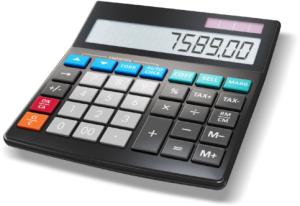Multipliers, Selling/Valuing Your Business, And Business Finance
What’s My Business Worth?
The Short Answer-
What someone will pay for it, and not a cent more!
The Long Answer-
The people who buy and sell businesses for a living (the Business Brokers) use a simple formula to work out the true value of a business, so that they can then put a realistic price on it.
Value is what the buyer gets. Price is what the seller gets. The two are seldom the same thing but, in a fair and average world there will probably be a strong relationship between the two.
Value is generally a composite of the following elements:
Tangible Assets
These consist of anything from buildings, plant and equipment to stock, work in progress and materials.
It is traditional to ask no more than the “book” or depreciated value of these assets, and it is often an area of contention as buyers seek to exclude items that do not add value for them, or are perceived to have less than book value.
In the words of one writer, you plant, equipment and stock are worth “about what they’ll bring at a sheriff’s auction on the courthouse steps in a blizzard in the middle of winter”. In other words, sellers should be very realistic about the fire-sale value of their tangible assets.
Another perspective to attempting to realise more than book value for heavily written-down assets is that you have already enjoyed an advantage from accelerated depreciation in the form of reduced taxation, and you will face potential additional taxation if you make a profit on their sale. It is often unwise to hold out for a higher-than-book value when that has the potential to deliver a relatively small after tax benefit to the seller, while running the risk of pricing themselves out of the market.
Intangible Assets
These may consist of intellectual property such as patents, trademarks, brands, trade secrets and processes, or goodwill.
Goodwill is essentially the “future profit earning potential” of the business and is calculated as a multiple of past profits before tax. While it is a truism that “past performance is no guarantee of future performance”, anyone buying a business usually does so in the expectation of enjoying a certain future continuity in sales, cashflow and profits based on past performance.
That expectation of future performance may be underpinned by long term customer relationships (or, better still, forward contracts for supply); brand recognition and acceptance; market advantage and performance relative to competitors; and/or expected changes in market size/demand.
There may be additional value-adding factors for a buyer such as expected synergy between or economies of scale delivered by combining a present with an acquired business. Having said that, astute buyers will usually downplay these advantages since they arise partly from the value the buyer brings to the situation and most buyers would be loathe to pay more because of the value they can add to an acquisition.
Astute sellers, however, would do well to research any value-adding potential for their seller and factor this into their asking price.
The Multiplier
While it is relatively easy to call in an outside valuer to determine the market value of most tangible and some of the more regular intangible assets, the area of widest interpretation and therefore widest difference of opinion lies in how much to pay for the future earning potential of a company – how many multiples of its past profit to accept as a fair valuation of its goodwill.
Here’s a simple scale that may prove helpful:
Multipliers for Business Configurations
•Self-named business[1], high dependency upon owner’s personal involvement = 1
•Self-named business, low dependency upon owner’s personal involvement = 2
•Self-named business, strong systems, low owner dependency = 2.5
•Generic named business, high dependency upon owner’s personal involvement = 1.5
•Generic named business, low dependency upon the owner’s personal involvement = 2.5
•Generic named business, strong systems, low owner dependency = 3.5
Add-ons
To the basic business value, add:
•Market advantage of trade secrets = +1
•Market advantage of current patents = +3
•Strong brand recognition = +2
•High barriers to entry[2] = +2
•Synergies for buyer = + negotiable (say, between 1 and 5)
Bottom Line
Michael Gerber (in The E-Myth Revisited) gave some great advice when he recommended that you “run your business as though you are getting ready to sell it”.
Businesses that have a well-documented history of strong and/or steady growth, constant evolution, excellent systems, strong people investment, good delegation, strong customer relationships, effective sales systems, strong positive cashflow and carefully-maintained profits sell easily. They sell more strongly to those to whom they represent a strong synergy.
But, at the end of the day: Go back and read the Short Answer at the beginning of this article.
——————————————————————————–
[1] An example of a self-named business is “J&A Smith Furniture”
[2] High barriers to entry include large capital investment, low response times to market (perhaps through rapid R&D capability), expert staff (where you have home-grown expertise that is not generally available in your marketplace).





